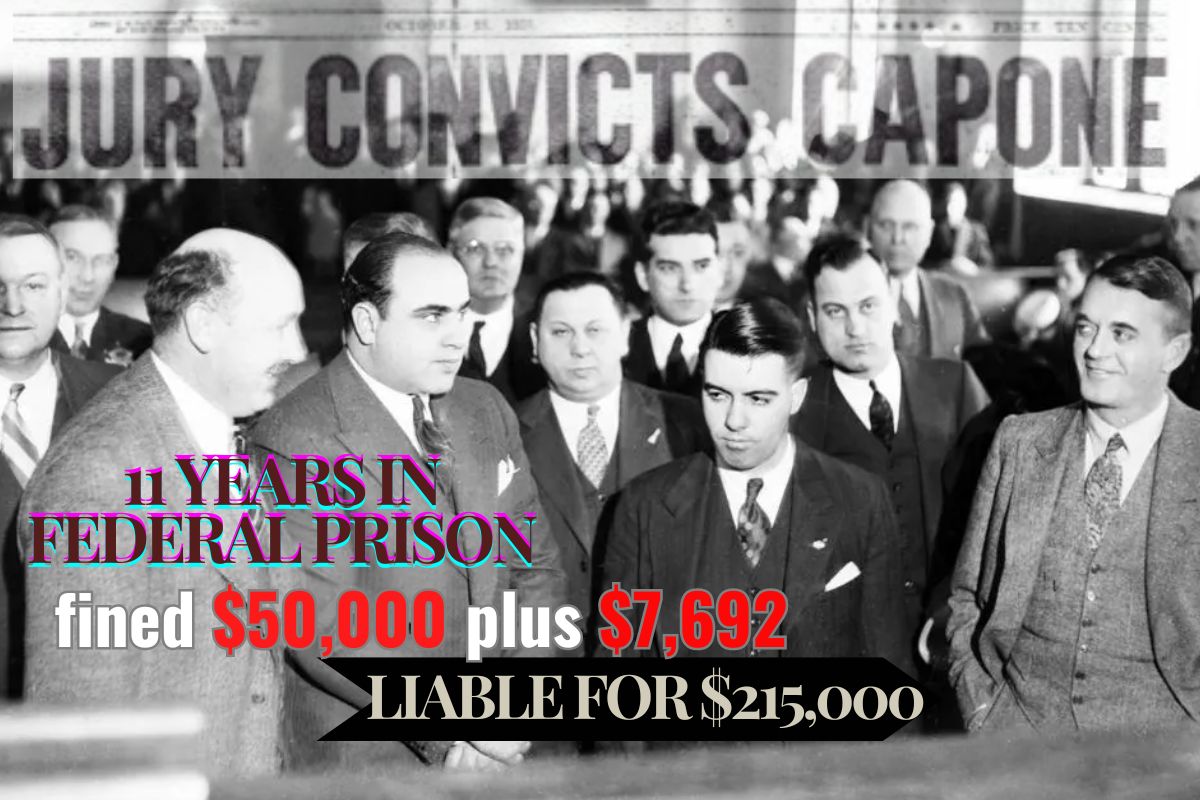Who Was Al Capone? donated some of the money from his illegal activities to charities.
Al Capone, often referred to as “Scarface,” was a crime lord who operated primarily in Chicago during the Prohibition era. His criminal empire was marked by illegal activities such as bootlegging, gambling, and bribery of government officials. Despite his violent and unlawful operations, law enforcement struggled to bring solid charges against him.
The Strategic Move: Focusing on Tax Evasion “Al Capone”.
While Capone’s violent operations were well-known, obtaining concrete evidence to prosecute him for these activities was challenging. This impasse led federal agents to adopt a new strategy. Enter tax evasion. The Revenue Act of 1926 mandated that all income, legal or illegal, was subject to income tax. Federal agents, led by Eliot Ness and Treasury agent Frank Wilson, began meticulously combing through Capone’s financial records.
The Hard Evidence against Al Capone.
The quest for hard evidence was arduous and required exceptional sleuthing. The breakthrough came with the discovery of financial ledgers that detailed Capone’s substantial income from illegal activities. These records formed the cornerstone of the case against Capone, proving beyond doubt that he had not paid taxes on these significant earnings.
The Trial That Made History on Al Capone.
The trial commenced in October 1931, capturing national attention. The courtroom buzzed with excitement as Capone’s team of high-priced lawyers fought fiercely to defend him. However, the collected financial evidence was overwhelming. On October 17, 1931, Capone was found guilty of five counts of tax evasion. He was sentenced to 11 years in federal prison, marking a monumental victory for law enforcement.
Prison journey of Al Capone.
Capone began his sentence in Atlanta U.S. Penitentiary, but due to his influential connections, he managed some level of comfort initially. However, he was later transferred to the notorious Alcatraz Island to ensure he could not manipulate his conditions. Life in Alcatraz was harsh and unforgiving, significantly deteriorating Capone’s health. By the time he was released in 1939 due to ill health, he was a shadow of his former self. Capone was sentenced on five counts of personal tax avoidance on October 17, 1931, and was condemned seven days after the fact to 11 years in government jail, fined $50,000 in addition to $7,692 for court costs, and was expected to take responsibility for $215,000 in addition to intrigue due on his back charges.
The End of an Era.
Al Capone’s imprisonment for tax evasion marked the end of his reign as one of America’s most infamous mob bosses. His downfall serves as a stark reminder of the power of the law and the relentless pursuit of justice. Though his criminal exploits continue to captivate, it is the story of his capture and conviction that underscores the importance of diligence and innovation in law enforcement.
A Lesson in Tenacity.
Al Capone’s downfall is a compelling case study in criminal justice. It highlights the unconventional yet effective methods that can be employed to bring even the most powerful criminals to justice. By focusing on tax evasion, federal agents were able to dismantle Capone’s empire and showcase the far-reaching impact of fiscal accountability. This fascinating chapter in history is a testament to the idea that no one, no matter how powerful, is above the law.





Leave a Reply